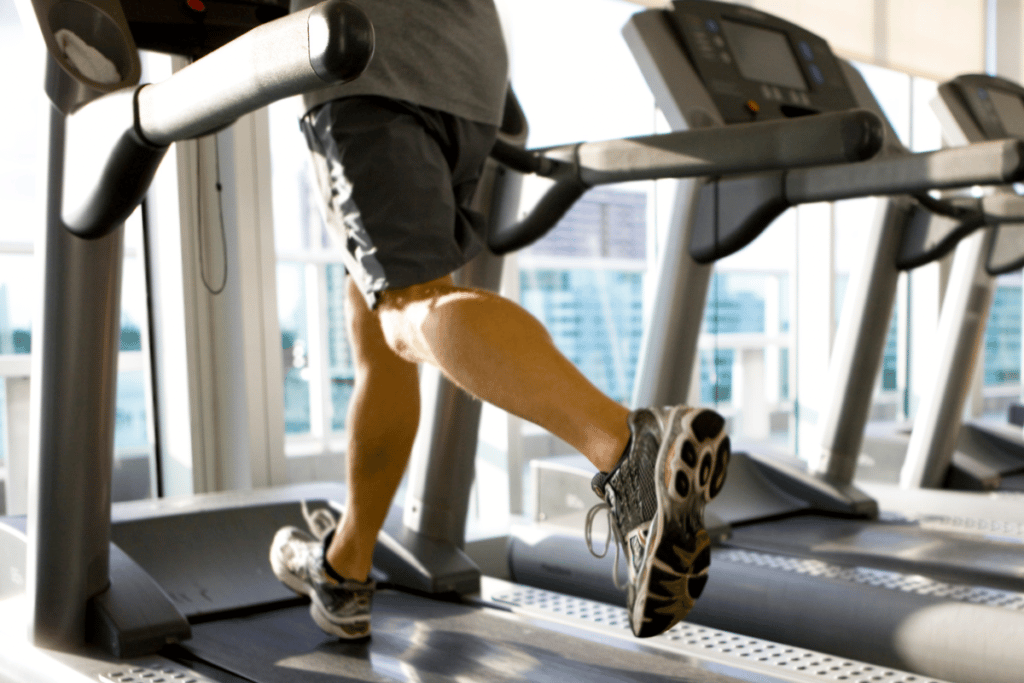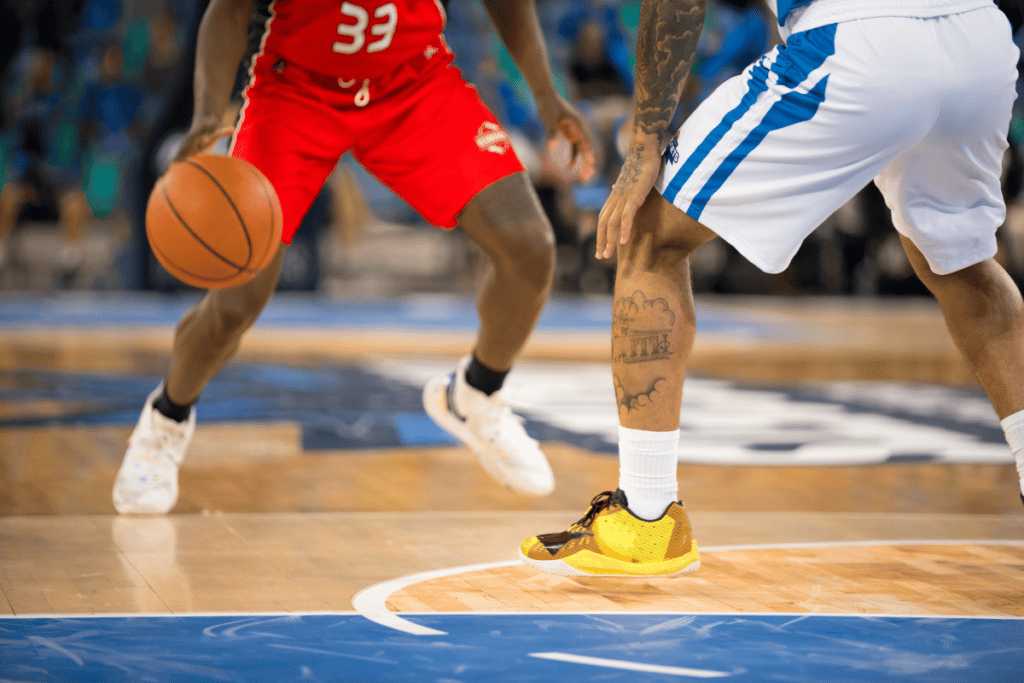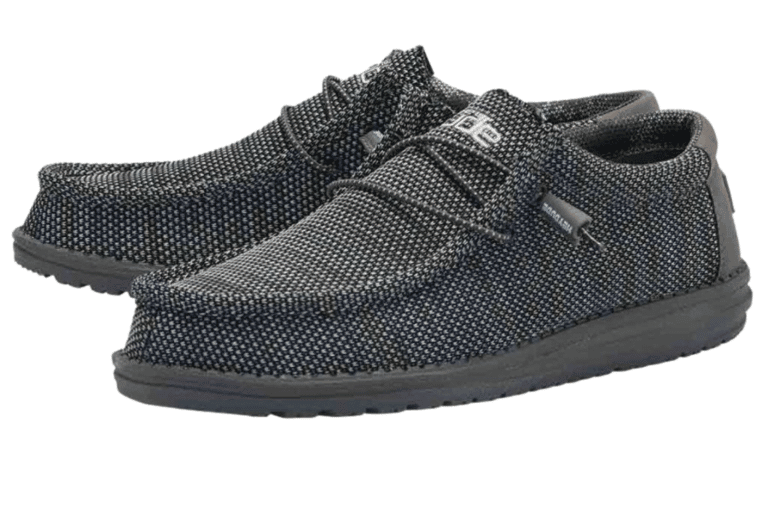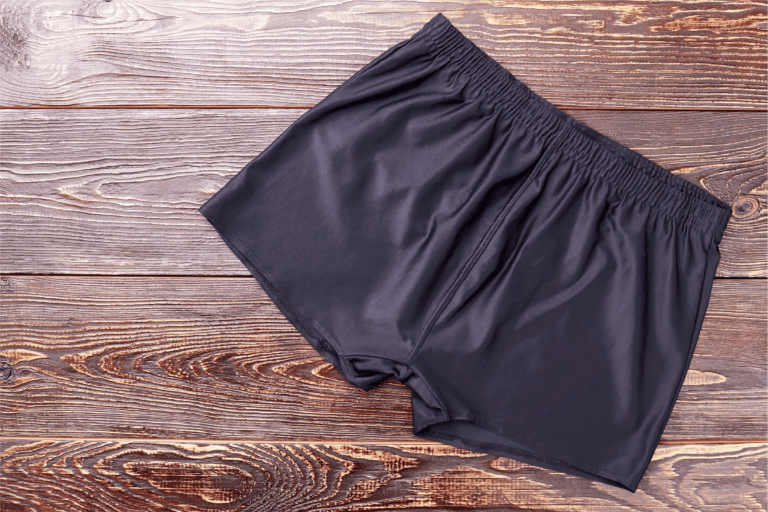Running Shorts vs Basketball Shorts (Key Differences & Advice)
For those of us participating in many different sports or athletic activities, it can be a little confusing to decide which gear to use for each training session. When I first got into running, I remember wearing some old gym shorts that ended up being way too long, heavy, and uncomfortable. Today, let’s compare running shorts vs basketball shorts.
The difference between running and basketball shorts is that running shorts are usually quite a bit shorter and lighter than basketball shorts. Running shorts also often have built-in compression liners made from moisture-wicking materials and feature pockets to help runners bring their keys, phone, gels, and water with them on longer runs.
Keep reading to learn a little bit more about how running shorts are made, why basketball shorts are longer, and which option is best for which activity.
Is it better to run in running shorts or basketball shorts?
As the names suggest, modern basketball shorts are made with the sport of basketball in mind, while running shorts have a more ergonomic design specifically meant for long-distance running.
If you plan to do a lot of running, it is best to find a good pair of running shorts for your training, especially if you plan to run longer distances. The reduced weight, moisture-wicking properties, and shorter length will improve performance and reduce the likelihood of problems during your run.
This is because running shorts should have design features that help with running, such as v-notches, comfortable material, lightweight fabrics, reduced weight, and shorter lengths to improve your range of motion.
Are basketball shorts and running shorts the same?
Obviously, these shorts are not the same.
While both types of shorts are for athletes, running shorts are designed to prevent issues with long, sustained running strides (like chafing, sweat accumulation, and irritation). On the other hand, modern basketball shorts are meant to handle multi-lateral movements and short, intense bursts of activity.
| Similarities | Differences |
|---|---|
| Designed for physical activity | Basketball shorts are longer and made of heavier material |
| Made of nylon or polyester | Basketball shorts are meant to be more versatile for a range of sports |
| Breathable, comfortable materials | Running shorts may have slits or notches on the side |
| Maximum range of motion | Running shorts are shorter and made with ventilation in mind. |
What are running shorts?
Runners can pretty much run in whatever type of clothing they want, but there is a whole industry built around running shorts for a reason – runners demand different things from their shorts than other athletes.
Compared to other sports, running features a lot of sustained, repetitive movements that can cause issues with friction, sweat accumulation, and comfort. Once you start adding up the miles, even the weight of your shorts can become a crucial factor in just how far you can go and how fast you can get there.
Running shorts are typically made with lightweight, synthetic materials such as polyester, nylon, or spandex, which are designed to handle the unique demands of running. These shorts are typically very short, rarely reaching the mid-thigh, and may have v-notches or slits cut in the sides to increase a runner’s mobility and fine mesh or other design features meant to improve performance.

These materials can typically wick moisture or sweat from a runner’s skin to keep him or her stay cool during the more intense portions of a run, and they may come with a built-in fabric liner for support and comfort. The materials used are often designed to decrease the likelihood of chafing or rashes, the most common side effects of long-distance running.
Running shorts also usually have a bunch of little hidden pockets to store things like keys, gels, water, a wallet, or a cell phone during your run. Unlike other sports, runners often end up traveling far away from their home or car on a run, necessitating more storage options.
Usually, running shorts are not worn outside of the context of running because of the short length, which may not be acceptable in many other social situations.
When should I wear running shorts?
Running shorts aren’t typically worn in social situations, but they’re perfect for – you guessed it – long runs.
Running shorts are an appropriate option when you are planning any type of long, medium, or short run. This could be a cross-country event, a 5K, 10K, or a marathon, or it could just be a short jog around the neighborhood.
You might even consider using running shorts for other forms of aerobic exercises, such as cycling, tennis, or anything else that includes a lot of sustained movement.
But, you shouldn’t wear running shorts if you are planning activities that require movements that could cause the shorts to ride up too high and get uncomfortable or potentially expose more skin than you would like. Consider, too, whether or not you’ll need protection on your legs because running shorts won’t give you any of that!
Avoid short running shorts if you are planning the following activities:
- Yoga
- Weightlifting
- Rowing
- Golf
- Baseball
- Hiking or trail running
Can I wear running shorts to the gym?
If you’re heading to the gym for a general workout and plan to squat or deadlift, short split-leg running shorts with slits cut all the way to the waistband may not be appropriate.
While you can wear running shorts to the gym, they probably aren’t the best option, especially if they are super short. Short running shorts are fine at the gym if you are planning to hit the treadmill or elliptical. If you are planning to squat, choose longer gym shorts.
Short running shorts tend to show a bit too much thigh and could make you or those around you a little uncomfortable. Likewise, most people don’t tend to wear short running shorts to the gym, as you may attract some unwanted attention. When squatting, you might even suffer an *ahem* wardrobe malfunction.
As someone who spends a lot of time on the road running and in the gym working out, I am always sure to keep separate short options for both.
With that being said, most running shorts are made with fabrics that would be conducive to gym activities, so if you feel it is appropriate, you may wear running shorts to the gym.
Should you wear underpants under running shorts?
Many pairs of running shorts have a soft, built-in lining that makes underpants unnecessary.
If your running shorts include a built-in liner, wearing underpants may actually contribute to discomfort and chafing. However, you’ll need to invest in a good pair of comfortable and supportive underwear to prevent chafing and irritation if your shorts don’t have a built-in liner to rely on.
Remember two things when making a decision about your underwear – comfort and support.
What are basketball shorts?
Basketball has been around since about 1892 and over the years players have worn a LOT of different uniforms. In fact, it used to be common practice for players to wear trousers while they played! Even after full pants went away, players still had to deal with short pants made from wool and other hot materials!
Through the 1940s, basketball shorts switched to synthetic fabrics and started to look more like what we think about today. Through the 1980s, they were actually very short.
These days, modern basketball shorts are a bit longer than they were in the past and usually MUCH longer than your average running short. As Michael Jordan states in 1987, he wanted a long short to rest his hands on in between plays, allowing him to wipe away some sweat and get ready for the next play.
Basketball shorts may be made out of polyester, nylon, or cotton materials, but they are typically bulkier and a bit heavier than running shorts. Different eras of basketball have utilized different short lengths (for instance, they were super short from the 50s through the 80s), but the current version is typically worn just above the knee.

Basketball shorts are longer and looser in order to allow players to stay cool without restricting their movement. Basketball requires players to be able to run, jump, and lunge freely, so tighter pants could lead to discomfort and limit their playing ability.
Some basketball shorts may be made with a specific team’s logo, while others are more generic. In certain contexts, basketball shorts may even be appropriate for social settings and casual dress.
When should I wear basketball shorts?
Basketball shorts are, of course, designed to be worn when playing basketball. That said, basketball shorts are typically not so different from normal athletic shorts so you can pretty much wear them anytime you want if they make the activity comfortable.
In the early 2000s, basketball shorts were made with heavier material and sometimes hung well past the knee. However, styles change with each era, and modern basketball shorts are worn above the knee. This makes them more versatile and better for other sports like running or cycling.
Basketball shorts have also worked their way into popular fashion in such a way that most people wouldn’t look twice at someone wearing basketball shorts out in public doing pretty much anything – shopping, eating at a restaurant, or just going for a walk. These days, informal dress is definitely the norm.
Can I wear basketball shorts without playing basketball?
Of course!
Wearing basketball shorts without playing basketball is completely acceptable, especially since they’re not as tight or revealing as many other forms of athletic wear.
Here are some of the most common times to choose basketball shorts:
- Weightlifting
- Tennis
- Soccer
- Running
- Dance
- Lounging
- Coaching
You can get away with wearing these versatile shorts while participating in a number of different types of activities.




![Why Do My Running Shorts Keep Falling Down? [6 Quick Fixes!]](https://yournext.run/wp-content/uploads/2023/01/why-do-my-running-shorts-keep-falling-down_featured-768x512.png)
